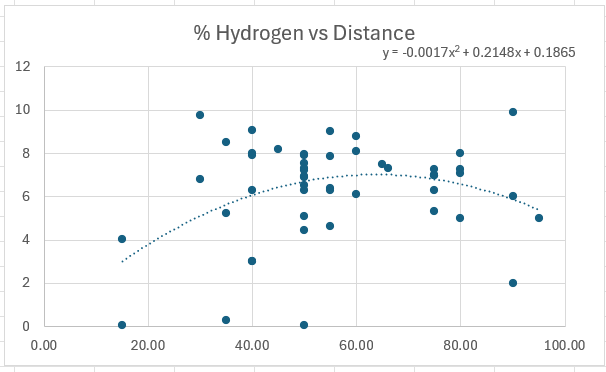An "Ideal" hot air balloon lab
- Brennan Koch
- Apr 18
- 4 min read
There is something mystical about hot air balloons. Yes, the students can say they work because “hot air rises” but sheesh that’s not a good answer. Instead, use this fun and competitive hot air balloon lab to connect the Ideal Gas Law to real life. Here’s how I do it. (I feel like a disclaimer is needed. Kids+fire+plastic can equal a mess. Be smart. Be in control. Make your own decisions about what is right for your kids.)

Ideal Gas Law calculations first
Before we start the lab, I have a problem on the board. I try to replicate the conditions in the room and have the students calculate how many grams of nitrogen (I just use nitrogen instead of “air”, and technically, I’m 78% correct) are in a 49 L garbage bag when the temperature is 20 C and the atmospheric pressure is 0.95 atm. This allows the students to connect PV=nRT to the reality of the mass of air. Then I have them redo the question, but this time with the temperature being raised to 45 C. They discover that a slightly smaller number of grams of nitrogen is in the balloon. Did the pressure change? No. Did the volume change? No. Just the mass due to an increase in average kinetic energy causing the molecules to escape out of the bag. Therefore, lower density. The students being able to see how few grams are lost as temperature rises also helps them understand how light their hot air balloon apparatus must be. They can also see how many "grams" of lift they will get.
Standards for design
I let the kids make their own choices about their design. We talk about the benefits of a good structure. But there are costs with the mass. We talk about the center of gravity. And then I just let them dream and build. I give them access to the ultralight 13 galloon garbage bags. Don’t tell, but I sneak these out of the janitorial supply cabinet. They have to be the super light weight ones that fit a small kitchen garbage can. They also get straws, spaghetti noodles, and aluminum foil. For string I give them fishing line, 20-gauge copper wire, and ultra-fine enamel wire that is typically used in electromagnets. They can attach using tape or staples. I also put out a few dissection probes for poking clean holes in the thin garbage bag.
For fuel they get ½ of a cotton ball that has 1 mL of ethanol on it. They kids will load the cotton ball into the balloon, but I add the fuel right before launch. The cotton ball must be attached to the “basket”. If they just make a little cup and the balloon swings in the air at all, then a flaming cotton ball rains down. Has that ever happened and landed on the hood of a car in the school parking lot? Maybe. Don’t ask me how I know.
The other rule is that no tape or straws are allowed to be in contact with the flame. The flame must be held by wire or foil. Has a straw structure ever caught on fire because it was too close to the flame and then dripped molten plastic onto the gym floor? Maybe. Don’t ask me how I know.
How to fly the hot air balloons
First of all, these balloons do not handle wind well at all. If there is even a little breeze, it can be challenging to keep the balloon spread out enough so that it won’t melt. But on a calm morning they can fly amazingly well outside. We are in a safe area and I allow the students to chase the balloons down. They think it’s great and are super competitive.
If the weather won’t cooperate outside, they will fly indoors. Obviously, there are safety concerns when letting flaming items fly around the school. So be safe.
Once a team is ready to fly, I load the fuel. I use 1 mL for outdoors and 0.75 mL for indoors. Then the students hold the balloon up and keep it fluffed out as I light the cotton ball. We lower the balloon the ground until it fills with hot air and will self-support. Then it’s lift off! Indoor balloons with 0.75 mL flew for about 1 to 1.5 minutes.
Make the lab competitive
The kids really want to know “who won” the lab. Indoors, you can time it from liftoff to landing. I have also made a tougher competition. They had to take the total time aloft divided by the time it took to hit the ceiling. The kids had to really think about their designs. The trouble with that competition is that not every balloon hits the ceiling. And losing by “division by zero” rule is kind of lame.
Outdoors, I use “heights of the school”. As in, that balloon looks to be three times as high as the school. It’s subjective but the kids love chasing the balloons down and arguing over who won.
This is a super fun lab that the kids really get invested in. They also get to see the real application of the Ideal Gas Law. Makes it an ideal gas lab. (see what I did there?)
Who's your ion? is our newest game. It is now in stock! Use it twice in your school year. First, it is a classroom manipulative to show how charges need to cancel out in ionic compounds. Then later it is a family-style game that helps them with water solubility. This is particularly helpful when prediction double displacement reactions.






Comments